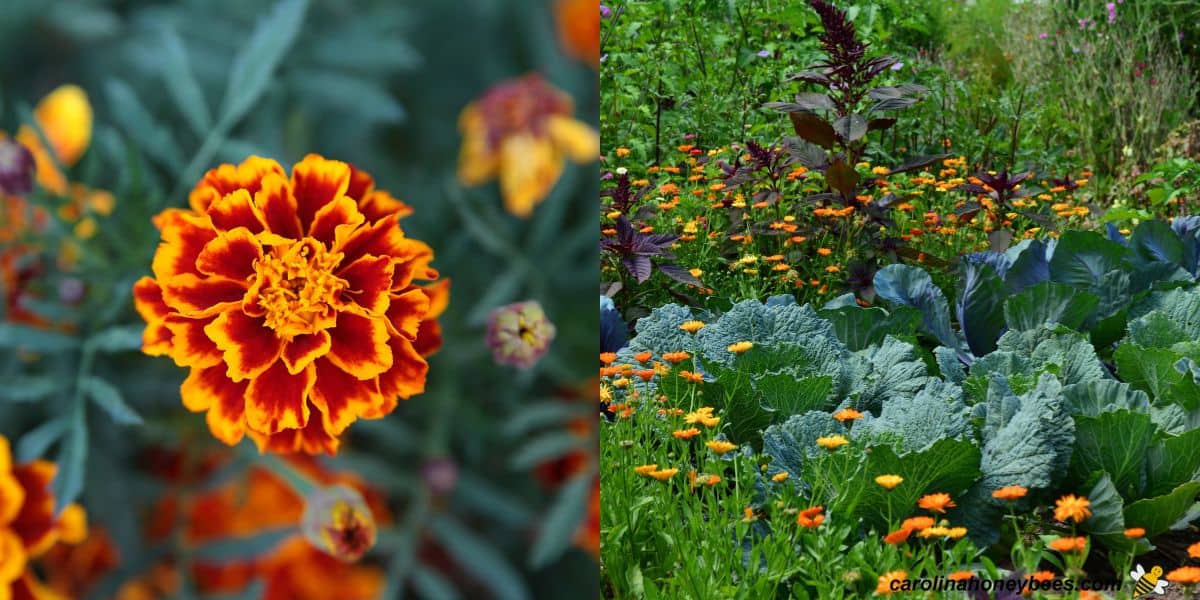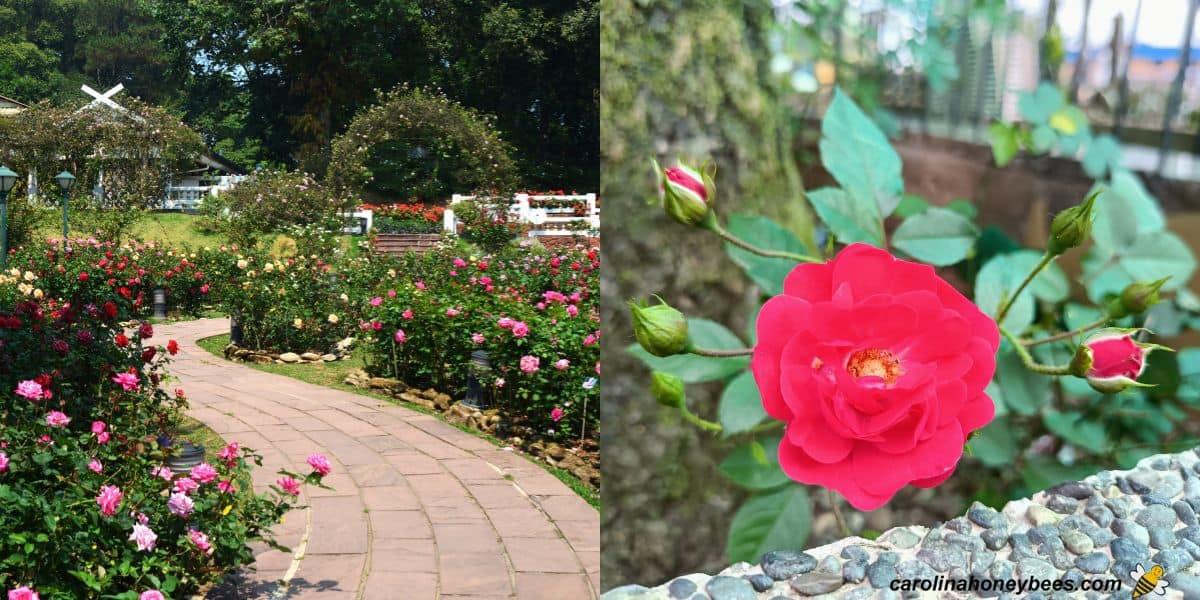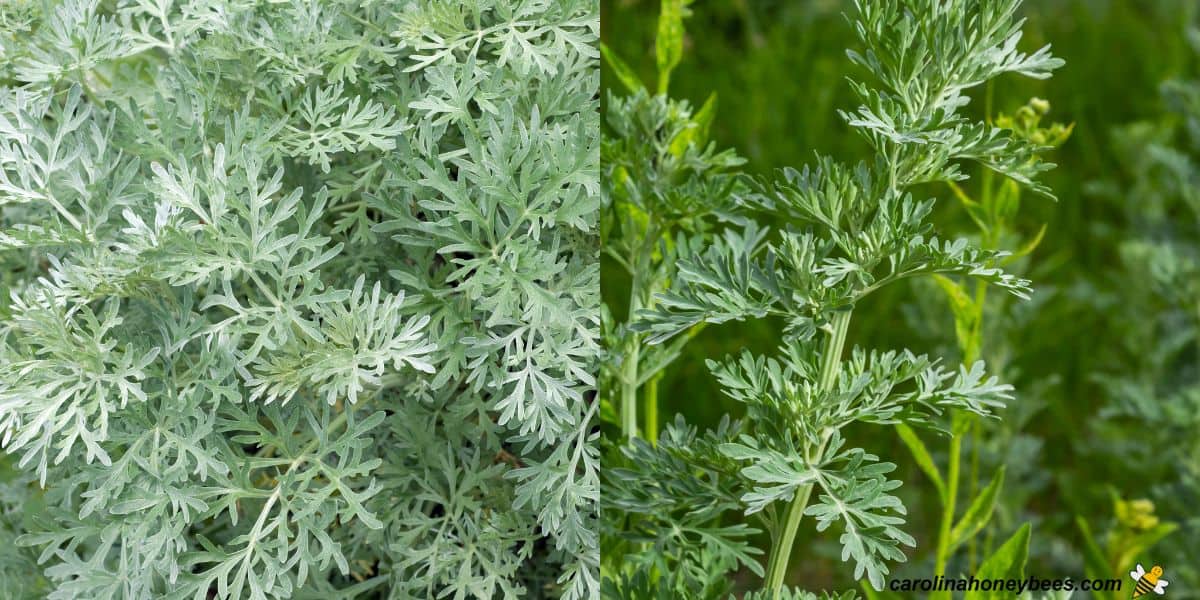Plants add beauty to our space and benefit many pollinators. But, there may be some areas where you want to use plants that repel bees. There are several reasons for using plants and flowers that don’t attract stinging insects. Perhaps, someone in your family is allergic to stings. This guide will show you some flowering plants that bees don’t like or that make them less interested in them.
Even a garden that is good for bees might have spots near paths or other areas where a few plants that keep bees away would look great. You can have both: ones that bees will want to visit and ones that will tell them, “No food here, please move on.”
Bees and wasps can be a nuisance, especially when you’re trying to relax or dine outdoors. Getting stung is painful and for some people can cause severe allergic reactions. While chemicals and traps can deter these insects, a natural and environmentally-friendly solution is to landscape with plants that repel bees and wasps. Many common herbs and flowers contain smells, oils, and colors that bees and wasps find unpleasant or unappealing. Placing these plants around patios, decks, and high-traffic outdoor areas creates a beautiful and pesticide-free buffer zone.
Some of the most effective natural bee and wasp repellents include
-
Basil – The strong smell of this popular herb keeps stinging insects away Grow basil outdoors or in pots
-
Citronella – Known for its lemony scent, citronella oil and plants repel many insect pests. However, this plant can cause skin irritation and is toxic to pets when ingested.
-
Eucalyptus – The scent of eucalyptus plants and oil deters bees, wasps, and mosquitoes. But be cautious as the bark, sap, and leaves are toxic.
-
Geraniums – With little pollen, geraniums don’t attract many pollinators. Red varieties are even more effective as bees cannot see the color red.
-
Marigolds – The chemical compounds that give marigolds their scent are unpleasant to bees and wasps. Choose from many marigold varieties to suit your garden.
-
Peppermint – Bees and wasps dislike the strong minty smell. Peppermint oil can also be used as a repellent.
-
Spearmint – Similar to peppermint, spearmint gives off a scent that deters wasps but may attract bee pollinators.
-
Thyme – This herb’s aroma makes gardens less inviting to wasps. For best results, plant alongside other repellent plants.
When planting natural bee and wasp deterrents, opt for herbs with sturdy scents like mint, citrus, or pungent spices. Flowers like marigolds and geraniums that offer little nectar or pollen also discourage bees from visiting. And choose red blooms since bees cannot see the color red. With some thoughtful landscaping using plants bees and wasps dislike, you can create an outdoor space to enjoy without fear of stings.
Top Garden Plants that Repel Bees
When picking plants for your yard, keep in mind that some plants may not be as effective at keeping bees away over time. Some will attract bees only when they are in full bloom – others are never inviting to bees.
Some of these plants won’t attract bugs, so you can put them in places in the garden where you really want something green. Here are a few ideas:

Basil is a popular plant in most herb gardens. When in bloom, the herbs attract honey bees. However, when not in bloom – many insects do not seem to care for the fragrance of basil. A natural pest repellent you can make use of it in your recipes too.

Citronella is known for being a plant that repels mosquitos. However, the unique fragrance of this plant can also repel wasps and bees.
Do not let get to the bloom stage – prune to prevent flowers. You can also use the essential oil from this plant to make some DIY citronella candles.

Geraniums are not very attractive to bees. They have a strong scent that is off-putting to many insects. They also contain almost no pollen that would entice foraging bees.
Even better is to get red geraniums because bees see them as black, while other flowers are white. This dark color is not inviting to a bee.
Geraniums are a tender annual in most locations but they can be grown very well in pots. Include them in your bee friendly landscape if you are particularly fond of the flower or foliage. They are a good choice for seating areas or walkways.
Marigolds are often planted with other plants in the garden because they keep some insects away that eat our vegetables.
They can also discourage stinging insects from hanging around due to their pungent odor. Marigolds are a human favorite. But, they have very little pleasing fragrance and little pollen.
It’s possible that the brighter oranges and deep reds will work best if you don’t want to attract foragers.

However, just having some marigolds around does not necessarily discourage hungry honey bees from visiting your garden. This is a good thing if you hope for bee pollination of your vegetables.
However, I haven’t seen any strong attraction between them and my bees, even when I had 25 hives in my apiary.
Roses are a popular landscape plant that come in many different varieties. You can find roses in every color, shape and bush size. You can even find roses that have been developed for large beautiful blooms and less thorns.

Roses are not very attractive to honey bees. Choose red or other dark colors to make it more likely that you won’t see as many of them around your rose bushes.
Also, avoid roses that are highly scented as bees are very sensitive to smell. A fragrant aroma is very enticing to a bee’s antenna (nose).
Wormwood (Artemisia) is one of the few plants that noticeably repel most insects. The strong odor is not offensive to humans but is very unattractive to bees.
Native to Europe, this plant is actually a herb that is used for various folk remedies. Though many flowering herbs are attractive to bees, this one is not a favorite.

This herbaceous perennial can be found growing in many locations as it has naturalized across the landscape. Reaching heights of up to 3 ft, the silvery-green leaves are very attractive.
Due to the unique color and leaf structure, Wormwood can be grown as an ornamental. Because it is pollinated by the wind, it has nothing to offer hungry insects.
It is a pretty plant but you may need to stake it if not supported by other foliage. Mine tend to sprawl and fall down in later Summer.
Plants that Repel Wasps
Can you find plants that repel wasps but not bees? Honestly, you won’t find many plants that repel wasps. In my garden, wasps tend to visit any plant. This is because meat eating wasps are actually helpful to plants. They eat the bugs and pests that harm the plant’s leaves.
Visiting flowers in only one characteristic that wasps and bees share. You may certainly see wasps in your garden as they hunt for bugs. And, they visit do flowers and sometimes drink sweet nectar-even though it is not their main diet.
But if having them around is a big problem, you might want to think about that when you plant. Wasps eat bees and other insects, so pick plants that keep them away. This should also help you get rid of wasps in your garden.
How to Keep BEES AWAY (8 Natural Bee Repellents)
FAQ
What plant keeps away bees?
What smell do bees hate?
Which flowers & plants deter bees?
There aren’t many flowers and plants that deter bees for the simple reason that plants need bees to pollinate them. However, wormwood (Artemis), eucalyptus, citronella, and peppermint are reputed to be natural bee and wasp repellents. You could plant these around your garden in order to reduce the bee population in your garden naturally.
What is a natural Wasp and bee repellent?
Thyme is another natural wasp and bee repellent that works really well. It’s super low maintenance and is a perennial, meaning it survives through all seasons. The easiest way to grow thyme is in a container on your porch and you can use it in a variety of homemade dishes. 11. Distilled Vinegar
Does natural bee repellent work?
Your natural bee repellent works because the water will evaporate and leave behind the peppermint, cinnamon, and cayenne smells to deter the insects from hanging around. NOTE: Use common sense when interacting with nature. Don’t spray directly at a bee or wasp because it may become agitated and come after you.
How do you use natural bee repellent?
These sweet smells will attract all kinds of insects. You can use this natural bee repellent safely indoors or outdoors. Combine 2 or 3 teaspoons of liquid soap with water in your spray bottle. This will create a soapy mixture that can be safely sprayed on most things. Add more or less soap, depending on where you’re spraying it.
Does a plant repel bees & wasps?
Yes. It actually works. The answer is simple- you just set up a bunch of plants that bees and wasps hate. If they hate the plant, then they’ll stay away. There are multiple ways a plant can act as a natural repellent: Does using plants really work? Yes- they work. Are you still in doubt that such a natural and simple solution can work wonders?
What smell repels bees?
There are several smells that will repel bees when they are concentrated in oil form. Clover, peppermint, geranium, and lemongrass are all effective at repelling bees and wasps. What smell do bees hate the most?
